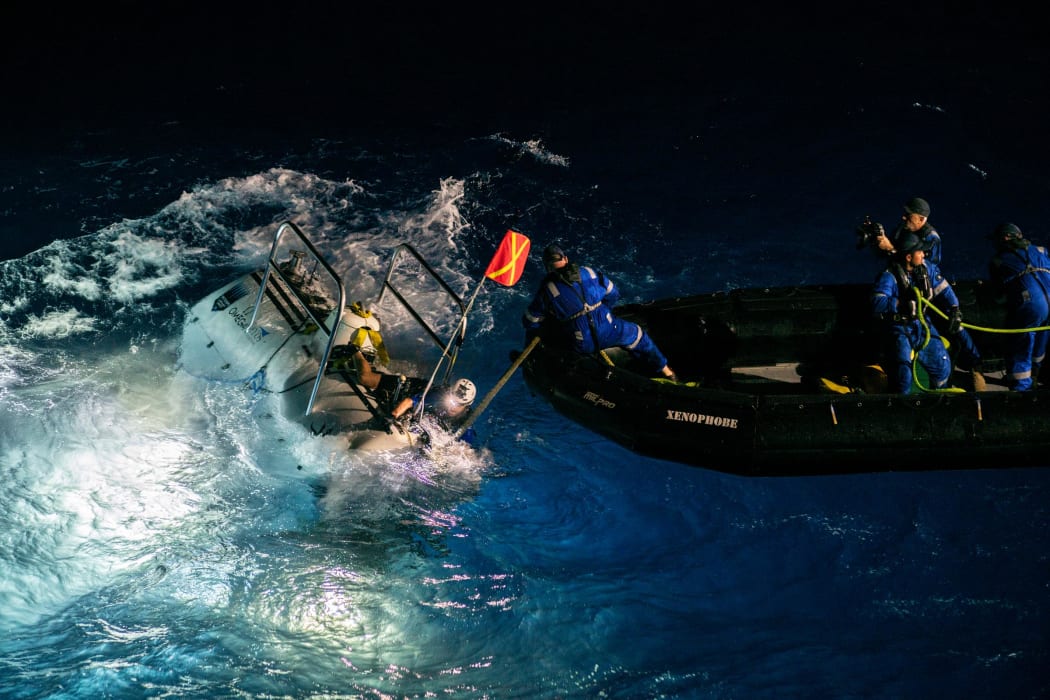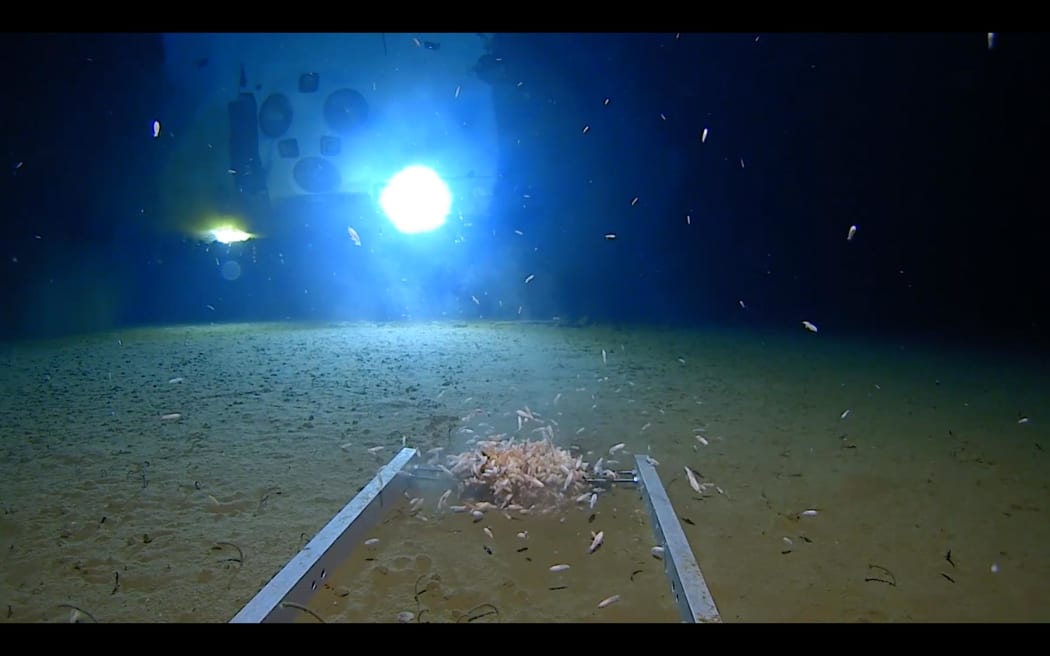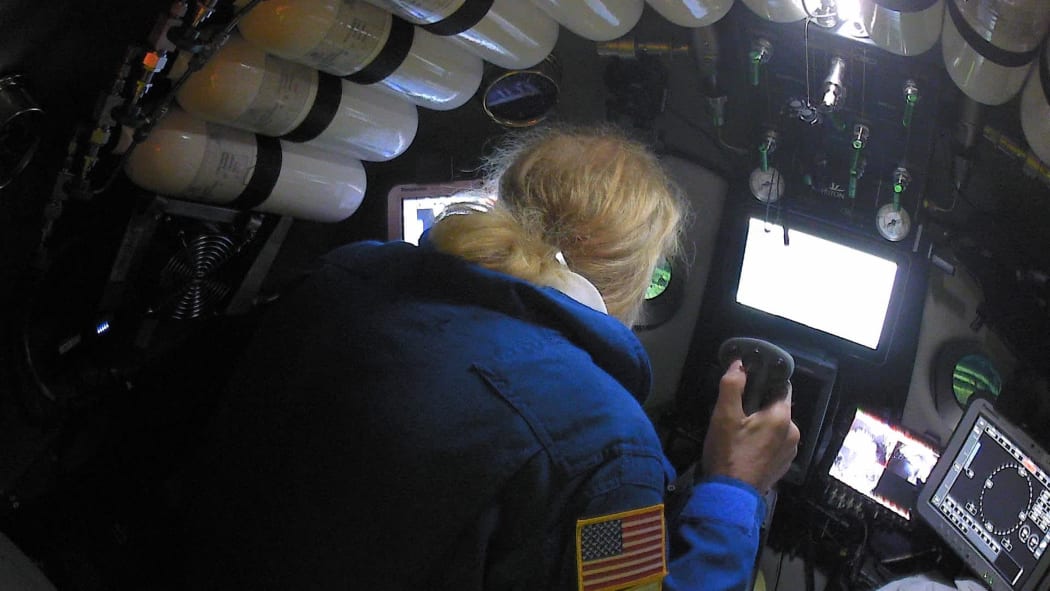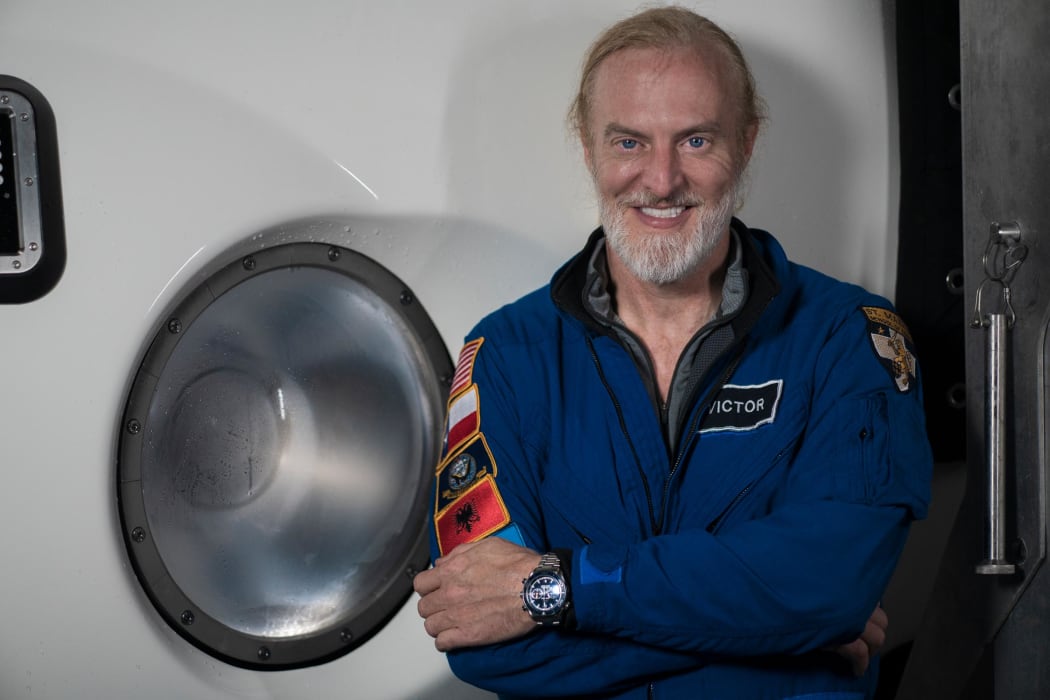An American explorer has found plastic waste on the seafloor while breaking the record for the deepest ever dive.

The submersible DSV Limiting Factor being recovered after its first dive to the deepest point of the Challenger Deep Photo: Atlantic Productions / Tamara Stubbs
Victor Vescovo descended nearly 11km (seven miles) to the deepest place in the ocean - the Pacific Ocean's Mariana Trench.
He spent four hours exploring the bottom of the trench in his submersible, built to withstand the immense pressure of the deep.
He found sea creatures, but also found a plastic bag and sweet wrappers.
It is the third time humans have reached the ocean's extreme depths.
The first dive to the bottom of the Mariana Trench took place in 1960 by US Navy lieutenant Don Walsh and Swiss engineer Jacques Piccard in a vessel called the bathyscaphe Trieste.
Movie director James Cameron then made a solo plunge half a century later in 2012 in his bright green sub.

The explorers believe they have discovered four new species of prawn-like crustaceans called amphipods Photo: Atlantic Productions for Discovery Channel
The latest descent, which reached 10,927m beneath the waves, is now the deepest by 11m - making Victor Vescovo the new record holder.
In total, Mr Vescovo and his team made five dives to the bottom of the trench during the expedition. Robotic landers were also deployed to explore the remote terrain.
Mr Vescovo said: "It is almost indescribable how excited all of us are about achieving what we just did.
"This submarine and its mother ship, along with its extraordinarily talented expedition team, took marine technology to a ridiculously higher new level by diving - rapidly and repeatedly - into the deepest, harshest, area of the ocean."
Witnessing the dive from the Pacific was Don Walsh. He told BBC News: "I salute Victor Vescovo and his outstanding team for the successful completion of their historic explorations into the Mariana Trench.
"Six decades ago, Jacques Piccard and I were the first to visit that deepest place in the world's oceans.
"Now in the winter of my life, it was a great honour to be invited on this expedition to a place of my youth."
The team believes it has discovered four new species of prawn-like crustaceans called amphipods, saw a creature called a spoon worm 7,000m-down and a pink snailfish at 8,000m.
They also discovered brightly coloured rocky outcrops, possibly created by microbes on the seabed, and collected samples of rock from the seafloor.
Humanity's impact on the planet was also evident with the discovery of plastic pollution. It's something that other expeditions using landers have seen before.
Millions of tonnes of plastic enter the oceans each year, but little is known about where a lot of it ends up.

Victor Vescovo spent four hours exploring the bottom of the trench. Photo: Atlantic Productions for Discovery Channel
A New Zealander involved in the mission said, more disturbing than the plastic rubbish found in the trench, was micro-plastics found in biological samples gathered.
Rob McCallum, the New Zealander who helped make the journey possible, said plastic had been seen in each of the trenches the team had been to so far, except in the Southern Ocean.
"But more disturbing is that within the life within the biological samples being recovered there's evidence of micro-plastics even at full ocean depth."
He said anything in the ocean would eventually find its way to the bottom of the ocean, and be absorbed into the food chain.
The dive forms part of the Five Deeps expedition - an attempt to explore the deepest points in each of the world's five oceans.
It has been funded by Mr Vescovo, a private equity investor, who before turning his attention to the ocean's extreme depths also climbed the highest peaks on the planet's seven continents.
As well as the Mariana Trench in the Pacific, in the last six months dives have also taken place in the Puerto Rico Trench in the Atlantic Ocean (8,376m), the South Sandwich Trench in the Southern Ocean (7,433m) and the Java Trench in Indian Ocean (7,192m).
The final challenge will be to reach the bottom of the Molloy Deep in the Arctic Ocean, which is currently scheduled for August 2019.
The 4.6m-long, 3.7m-high submersible - called the DSV Limiting Factor - was built by the US-based company Triton Submarines, with the aim of having a vessel that could make repeated dives to any part of the ocean.
At its core is a 9cm-thick titanium pressure hull that can fit two people, so dives can be performed solo or as a pair.
It can withstand the crushing pressure found at the bottom of the ocean: 1,000 bars, which is the equivalent of 50 jumbo jets piled on top of a person.
As well as working under pressure, the sub has to operate in the pitch black and near freezing temperatures.

Victor Vescovo, a private equity investor, climbed the highest peaks on the planet's seven continents before turning his attention to the ocean's extreme depths. Photo: Atlantic Productions / Tamara Stubbs
These conditions also made it challenging to capture footage - the Five Deeps expedition has been followed by Atlantic Productions for a documentary for the Discovery Channel.
Anthony Geffen, creative director of Atlantic Productions, said it was the most complicated filming he'd ever been involved with.
"Our team had to pioneer new camera systems that could be mounted on the submersible, operate at up to 10,000m below sea level and work with robotic landers with camera systems that would allow us to film Victor's submersible on the bottom of the ocean.
"We also had to design new rigs that would go inside Victor's submersible and capture every moment of Victor's dives."
After the Five Deeps expedition is complete later this year, the plan is to pass the submersible onto science institutions so researchers can continue to use it.
The challenges of exploring the deep ocean - even with robotic vehicles - has made the ocean trenches one of the last frontiers on the planet.
Once thought to be remote, desolate areas, the deep sea teems with life. There is also growing evidence that they are carbon sinks, playing a role in regulating the Earth's chemistry and climate.
- BBC


